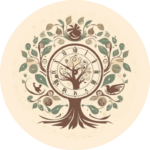In the 1920s, Virginia Woolf famously described how the history of women was unknown: ‘It has been common knowledge for ages that women exist, bear children, have no beards, and seldom go bald, but save in these respects […] we know little of them and have little evidence upon which to base our conclusions.’ Woolf was writing shortly after women were granted the vote in the UK (1918), after an arduous campaign by the suffragettes. This first feminist wave, associated with the political women’s suffrage movement, did not prompt historians to investigate women’s history with a few exceptions.
What is Cultural History?
Cultural history is not the history of culture – whether we think of culture in a strict sense (high culture…
What are Secrets of Women?
Throughout history, the womb was often thought to be a mysterious organ, which could make women ill yet create new life. Knowledge about women’s bodies and especially reproduction was thought to be hidden in the womb, ‘secret’ from prying eyes.




